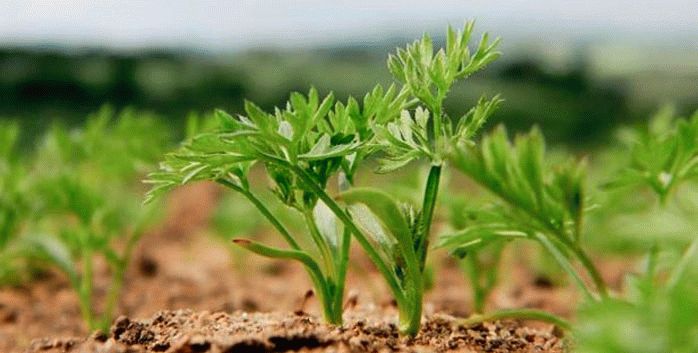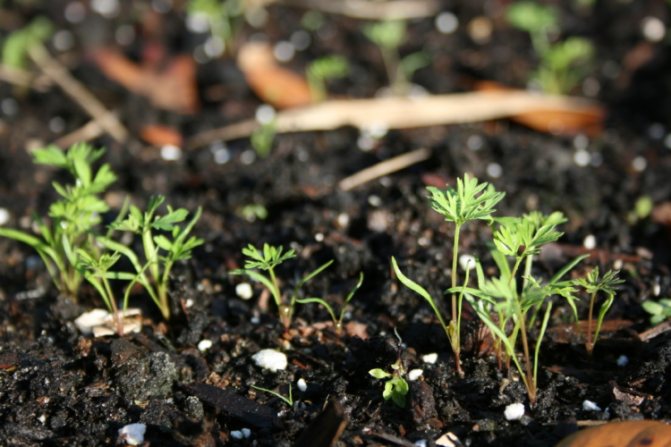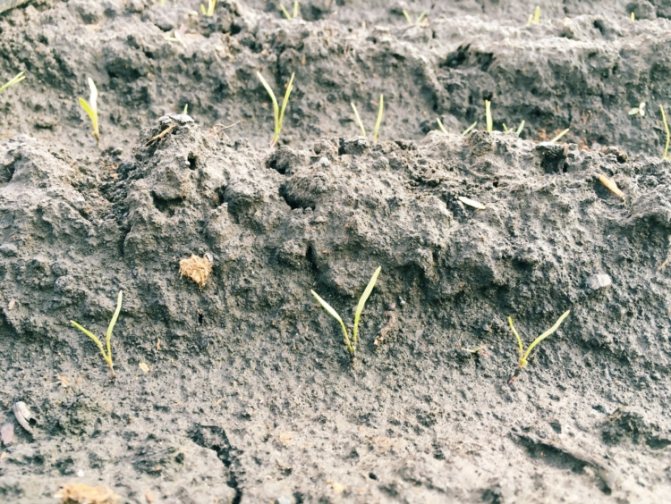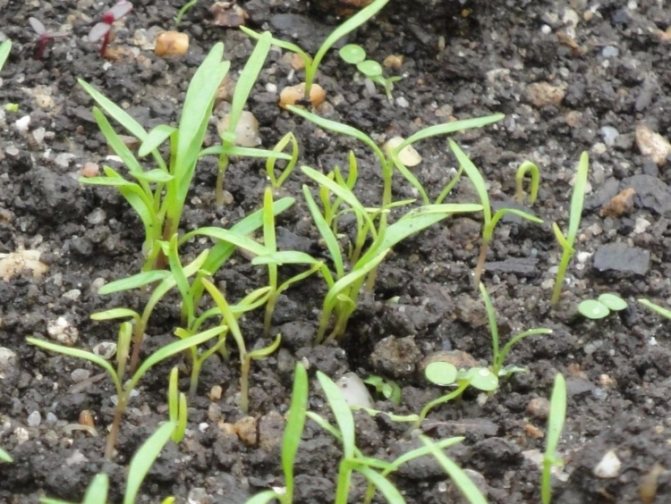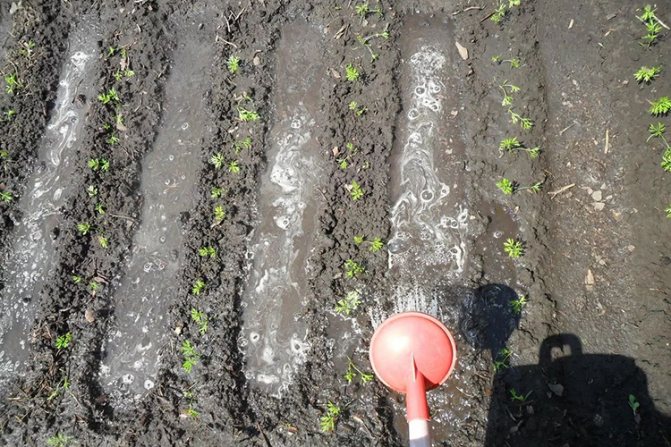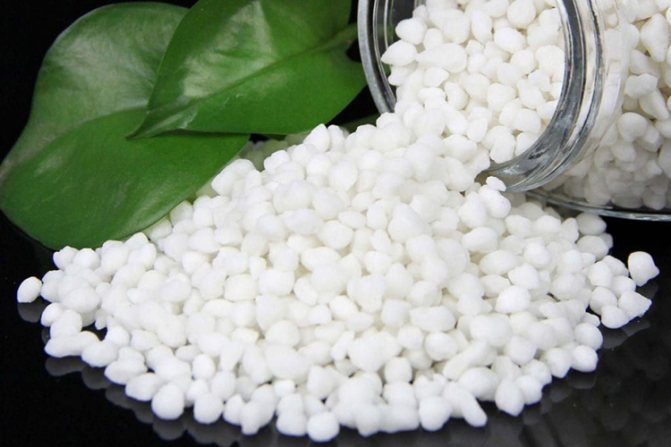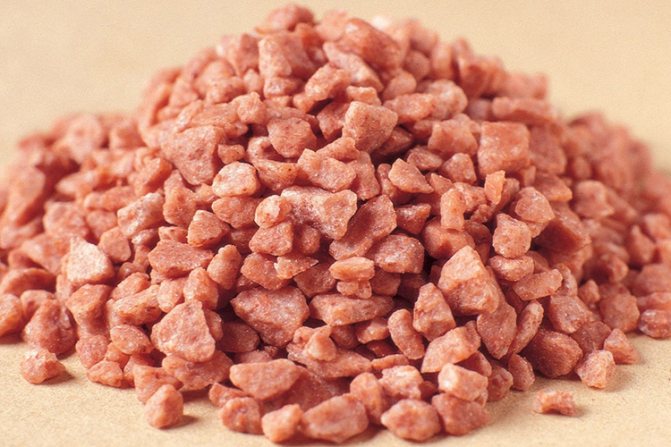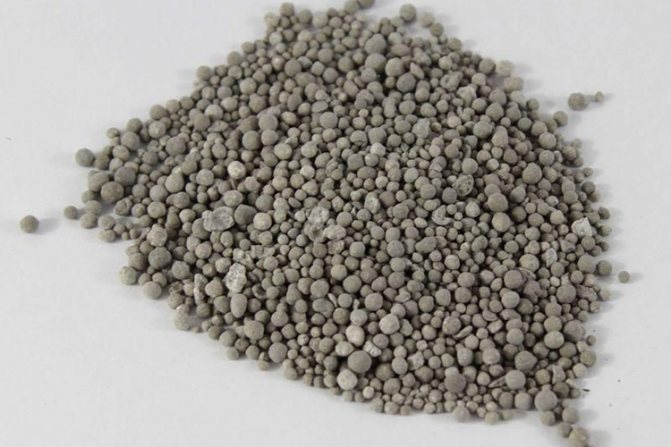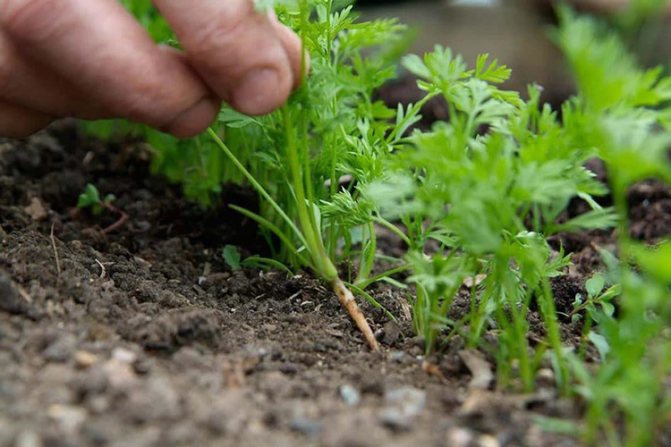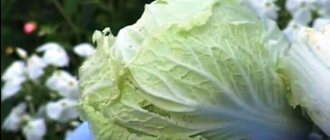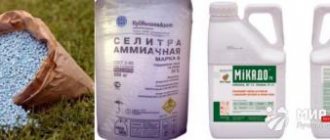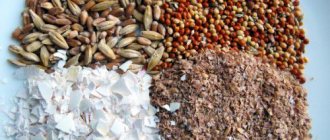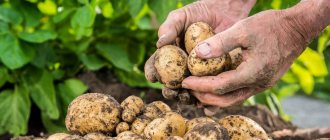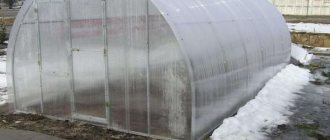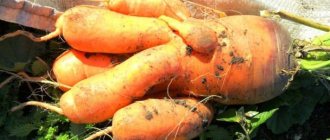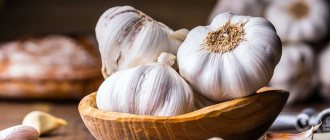Carrots are one of the most demanded vegetables in human nutrition. It is rich in trace elements and vitamins, carotene for vision. Small children are given it in the form of puree or juices for the normal development of the musculoskeletal system, muscles and active growth. We give information about the nuances of growing carrots on this page of our website.
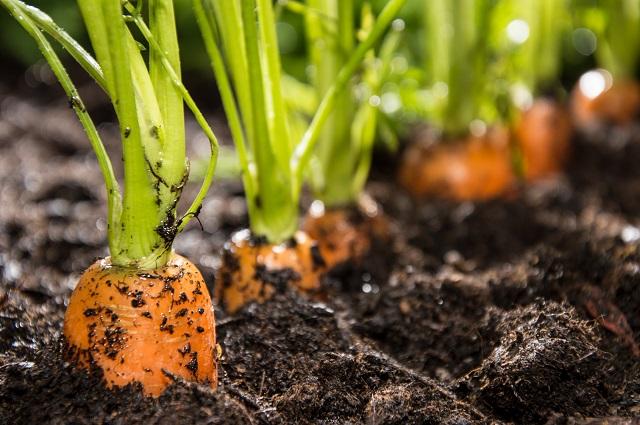
In the open field, carrots will grow well from seeds; seedlings in cups are not suitable. When burying seedlings in the ground, young and thin root crops can be damaged. They can grow, but they will be crooked, twisted. And we need a straight, voluminous and juicy carrot. Planting and care in the open field can be carried out according to the lunar calendar every spring. You can also sow vegetable seeds before winter.
What affects seed germination
Carrots are among those plants whose seeds quickly lose their germination. Based on this, the best for sowing are those that were harvested last season. But they are also suitable for sowing and 2-3 years ago (if stored properly in a dry and cool place). But even fresh seeds do not have 100% germination, so this should be taken into account.
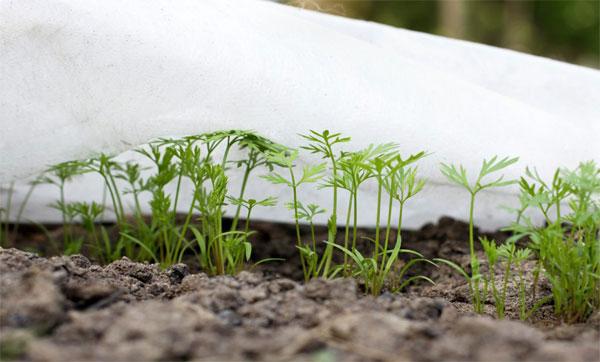

The quality of the seed also depends on the origin of the seed. If they are purchased in stores, then you need to pay attention to the manufacturer. Many firms are known in the market as reliable, so it is recommended to buy their products. If the seed is harvested from your own plants, then you need to select the best large specimens.
In addition to the quality and freshness of seeds, germination rates are influenced by the temperature and humidity of the environment in which they will germinate. The quality of the soil used for cultivation, the depth to which the seeds were buried for sowing, the mode of watering and lighting are also important.
So, under favorable conditions, carrot seedlings can appear on the surface of the beds about 2 weeks after sowing. If it is cold, they may appear after 3-4 weeks. The long germination time is explained by the fact that carrot seeds contain essential oils.
Winter sowing
Watering a tomato in a greenhouse through plastic bottles
Slowly sprouting carrot seeds require high soil moisture and are sown as early as possible in spring. If you are late with sowing, the seeds, falling into dry soil, give weak shoots or will not germinate at all. Planting before winter is favorable in that the melt water nourishes the seeds in the best way. Soil temperature + 4 ° C is when winter carrots can sprout. At this time, you should not be afraid of frost, the seedlings of a cold-resistant culture tolerate a drop in temperature to -3-4 ° C.
The ridge for sowing is chosen horizontal, quickly freeing from snow. From a site located on a slope, seeds can be washed out in the spring. The landing site is prepared after the summer harvest, the soil is dug deeply, fertilizers are applied. Furrows are marked on loose soil, in October, making them twice as deep as for spring sowing at 4-5 cm. The soil will be compacted by the time of sowing, and the depth of the furrows will be 2-3 cm. The bed is covered with non-woven material from erosion by precipitation.
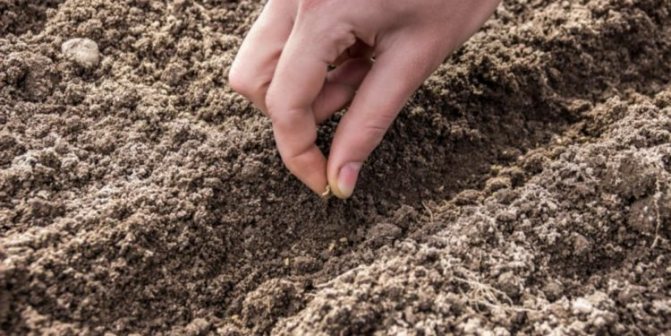

Winter sowing
Winter sowing of carrots is carried out with the onset of frost. A thaw can provoke the start of seed growth, and during frost they will die. The soil for filling the furrows after sowing is stored in a warm room.The seeding rate for podzimny planting should be increased by 25% compared to the spring. When the snow falls, a special material is thrown over the garden bed to insulate the crops.
In order to recognize where they are sown and what the carrots and seedlings look like, you can plant markers, such as lettuce, in the hole along with the plants. The salad will rise early and indicate where the carrots are sown, will allow you to properly weed and loosen.
Presowing seed treatment
In order for carrot seeds to germinate better, they must first be prepared for sowing. There are 2 effective methods by which you can speed up the germination of carrot seeds.
Bubbling
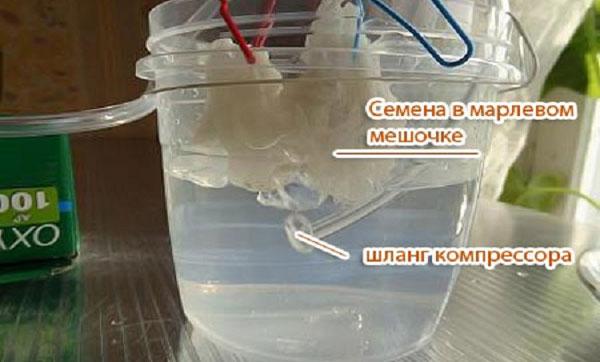

This method allows you to accelerate the germination of carrot seeds and get its shoots a week earlier than usual. The principle of bubbling is to soak the seeds for a while in water through which air passes. To do this, use an aquarium compressor or a car pump.
The process itself is as follows: warm water is poured into the container, the compressor or pump is lowered so that the air reaches the bottom. A little liquid complex fertilizer and seeds are added to the container. The processing time is ¾-1 day, but if the shell on the seeds begins to burst, bubbling should be stopped. After the end of the procedure, the carrot seeds must be removed from the water, dried a little and can be sown into the soil.
Soaking in water
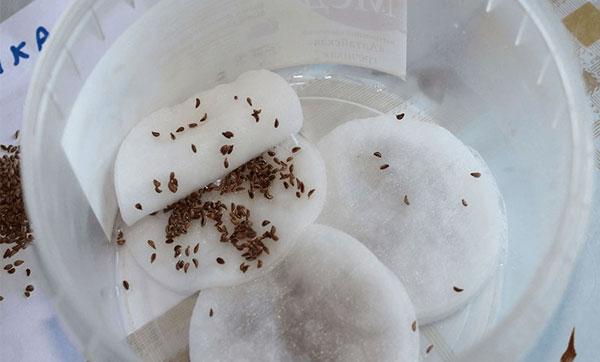

This is an easier method, but its principle remains almost the same as that of the previous one - essential oils are washed out of seeds soaked in water (they prevent quick access of moisture to the embryo and delay germination) and they get an incentive to germinate earlier than not soaked ones. Germination is simple - you need to soak the seeds in warm water and change it every 4 hours. The total duration of the procedure is 2 days. Thanks to this germination, carrot seeds sprout 5-7 days after planting.
Harvesting
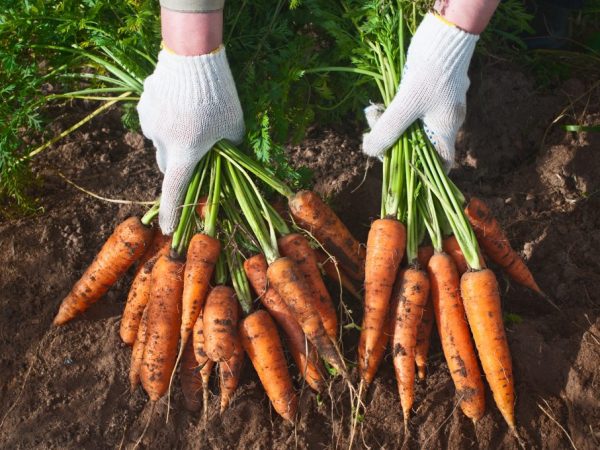

You can't always reach carrots with your hands.
It is bad when the root crop outgrows, but you should not pull it out in advance. At a temperature of 4 ° C, carrots stop growing, and at sub-zero temperatures, they are affected by gray rot. Harvested in late August or early September. As a rule, by the end of August, the root crop is fully ripe.
The ripening period of the culture is 80-115 days. There are early hybrids that mature in 2 months (Saturno F1). They are harvested in the middle of summer. The crop is stored in a bag that allows air to pass through well, or a box.
If the root crop has not passed all the phases of the growing season, and frost is imminent, you should independently accelerate the ripening period. There are growth stimulants on sale. The use of these biological products does not harm the vegetable crop.
The average plant yield is about 100 tons per hectare.
Preparation of soil and beds
The soil that carrots love is fertile, light and loose. Better if it is sandy loam or light black soil. In heavier soil - loams and especially clays - such a root crop grows worse, vegetables are smaller and uneven. If there is such a soil on the site, it is necessary to improve it even before sowing the seeds - to dig up and add sand or rotted sawdust in an amount that is greater than the clayey earth. If the soil is acidic, it must be neutralized by adding lime.
The preparation of any site should include:
- harvesting all unnecessary plant material left over from the previous culture;
- deep autumn digging of the earth;
- fertilizing it with humus and ash or mineral fertilizers.
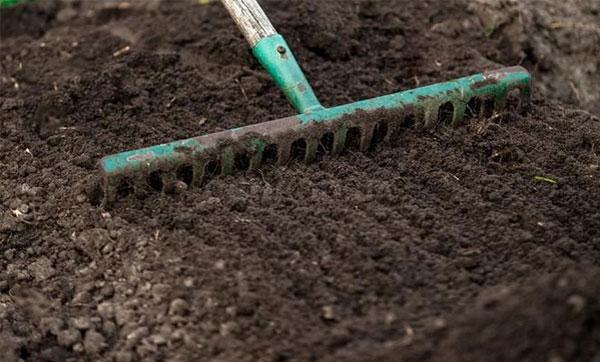

In the spring, you also need to dig up the beds again, level the surface and cut the planting grooves and additionally spill them with water. If fertilizers were not applied in the fall, then this can be done in the spring, but in this case it is preferable to use mixtures of a mineral nature.
Carrots grow best in warm, sun-warmed soil, but still moist enough to have enough moisture for the normal development of carrot plants. If the spring is cold and damp, then the soil can be heated artificially - by putting a film on top of the beds for several days. Under it, the ground will warm up faster and become suitable for sowing.
Pests and diseases
It is not enough to know how to grow carrots. It is important to be able to reanimate the beds and get rid of harmful insects, infections and viruses. Carrots are most susceptible to white and gray rot, bacteriosis, felt disease, and phomosis. Of the pests, vegetable crops are attacked by hogweed hogweed, carrot fly and hawthorn aphid.
- White rot appears due to excessive nitrogen in the soil. It will be possible to save the plants by introducing preparations containing copper.
- Gray mold is a fungal disease. Insecticides are used to treat carrots. As a preventive measure, soil disinfestation is carried out. Affected bushes look weak, the tops will wither even with sufficient moisture.
- Bacteriosis, or wet bacterial rot, is an infectious disease. Affected plants are removed from the garden, and phosphorus-potassium fertilizers are applied under the rest of the root crops. Affected plants are burned. If you bury them, the infection will penetrate the ground. Prevention of bacteriosis is timely loosening of the soil and compliance with the rules of crop rotation in the garden. To prevent the disease from affecting large and even carrots during storage, the harvest is dried in the sun after harvest.
- Rhizoctonia, or felt disease, is a fungal disease. As a fight against the disease, the plantings are sprayed with a solution that contains mancozeb or copper oxychloride. As a preventive measure, the rules of crop rotation are observed and the soil is periodically disinfected.
- Phomosis is one of the most dangerous fungal diseases. Affected plants are removed from the garden, the rest are treated with antifungal agents. As a prophylaxis for the disease, they harvest on time and store at a temperature not exceeding 10 ° C. The optimum storage temperature is 2 ° C. At lower temperatures, the root crop freezes, and at higher temperatures, it becomes lethargic. Sluggish carrots lose their taste. After harvesting, the carrot tops are removed from the site.
- To protect carrots from pests, flowers with a pungent smell are planted near the beds: marigolds, geraniums, etc. - they remove weeds in a timely manner and do not plant nearby vegetables that are affected by the same pests. Tar helps fight carrot onions.
To minimize the risk of any disease, high quality healthy planting material is used. Low-quality seeds often grow weak and light carrots, which during development often have to be treated with chemicals.
Carrot planting rules
Carrot seeds are quite small, so you can use some simple methods to distribute them evenly over the beds. For example, dried seeds are mixed with coarse, slightly wet sand: a liter jar of sand is taken for 10 g of seeds, mixed well and evenly scattered along the grooves with a swinging motion of the hand. From above, everything is covered with a small layer of soil and peat.
For even and fast germination, you can sow the carrots on paper tape. In this form, they are easier to lay out on the beds, so you can save planting material and not thin out the shoots in the future.
There is another, not very common, way - to brew liquid paste, pour it into a bottle, pour seeds there and shake it. Then pour the mixture evenly into the grooves. Regardless of which method is chosen, sowing carrots so that they sprout quickly, you need to a depth of 2 cm on average.The interval between rows is 15-20 cm, between plants after thinning, on average 5 cm.
Planting root crops
They choose warm and calm weather without wind for sowing. For direct landing, we choose the methods:
Classical. The garden bed is watered abundantly with hot water 7 days before sowing and Fitosporin is added to it. Then they cover it with a film so that moisture is preserved and the earth warms up better. On the day of sowing make furrows to a depth of 2-3 cm and cut them at a distance of 15-20 cm so that the greens of the carrots do not shade the adjacent garden bed. In deep furrows, seedlings will appear late, in shallow furrows, seeds may die.
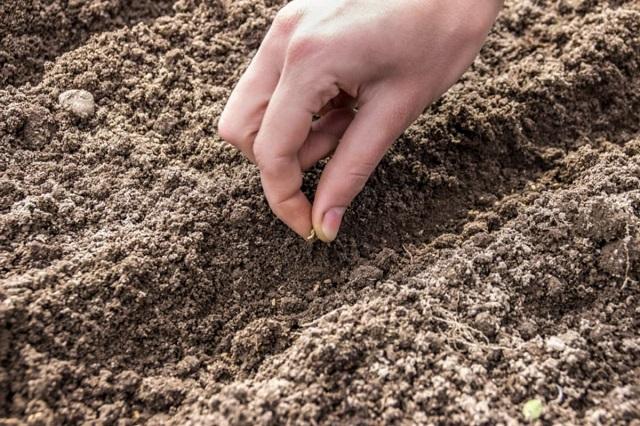

Before sowing the rows are moistened with warm water with or without potassium permanganate, then powdered with wood ash as potash fertilizer and from pests - with tobacco dust. Seeds are spread at a distance of 2-3 cm so that the crops do not have to be thinned out. Sprinkle fertile soil on top and slightly compact the rows with the back of the rake so that the seeds better contact the ground. You can also sprinkle peat chips as mulch.
To retain moisture and heat in the soil and for the speedy germination of planting, the bed is again covered with foil or spunbond. If the sun is too hot or seedlings have already appeared, the shelter is promptly removed after 7-14 days, especially after preliminary soaking of the seeds. If this is not done, then tender sprouts can rot due to excessive moisture.
Unusual methods sowing a vegetable. Stir dry seeds:
- in sand in a ratio of 1: 5 or 1:10;
- in tobacco and / or mustard dust to protect against pests;
- with jelly or paste.
Sprouted or pelleted seeds are sown like dry seeds. They are evenly laid out along a damp groove, can be mixed with jelly in a bottle and poured onto the garden bed through a plastic tube inserted into the cork. For a 2 liter bottle of paste, you need 2 tbsp. l. seeds or 4 grams. The seeds can be glued to a tape of paper and laid out on the groove, and then sprinkled with soil.
How to care for root vegetables
Carrot care after planting involves regular watering, especially with a young and weak root system at the very beginning of growth. This will exclude the appearance of deformation and a large number of fine hairs on the root crop. Then you can water using the fine-drip irrigation system.
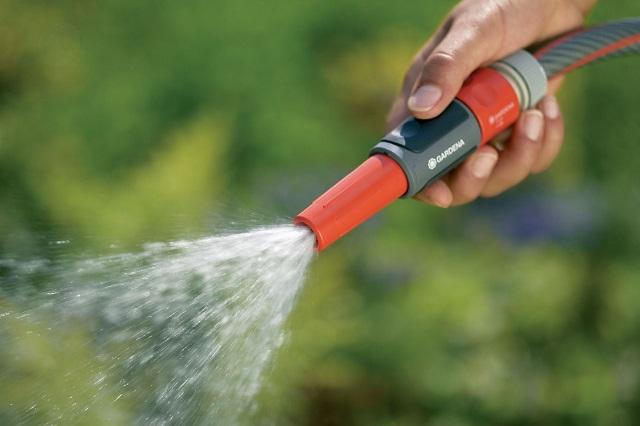

The plant is fed before direct planting in the ground. During the growing season, fertilizers cause the accumulation of nitrates in root crops. What kind of soil does carrots like? Of course, free from weeds and loose. It is necessary to loosen and weed the soil between the rows so that oxygen is better supplied to the roots, in order to preserve moisture in the soil, as well as to get rid of pests and diseases. A developed root system uses water sparingly.
Do not water the root crops 2-3 weeks before harvesting them, since excess moisture contributes to cracking if the root crop is already overripe.
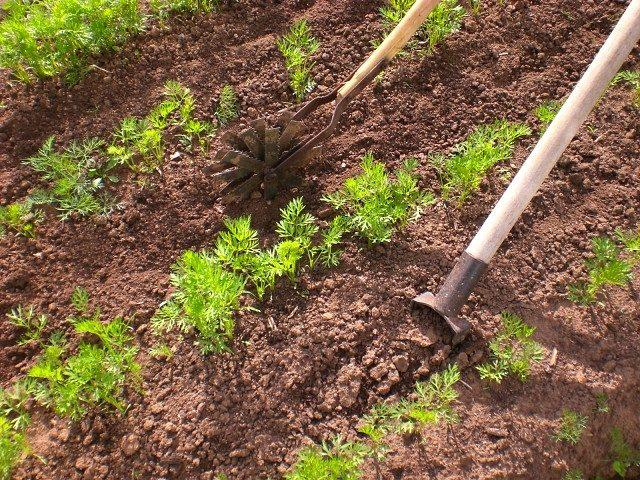

As for the thinning of the plant, then you do not need to wait for the ovary of the root crop in young shoots in a dense garden, but to carry out a pick. If this time is missed, then thinning will severely damage root crops growing close to each other. Then the plant is deformed and loses its presentation.
When to harvest carrots
How much carrots grow depends on the selected variety. Required for early varieties - 65-80 days, for medium - 80-100 days, for mid-late - 90-115 and 110-130 days for ripening. The countdown is carried out when the first shoots appear in the beds. Early vegetables are harvested gradually in the middle of summer, they are not stored for long. Mid-season roots are harvested in the second half of September, late-ripening - at the end of September, taking into account the temperature.
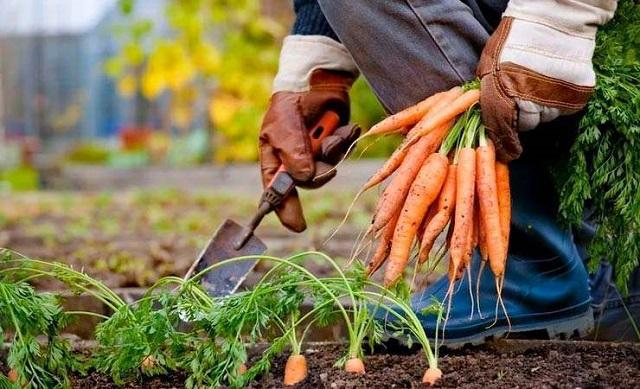

If it is too early to harvest the crop, then its volume, useful properties decrease, and fragility during storage is lost.With a late harvest of a vegetable, its juiciness is lost, cracks appear, the pulp becomes denser, storage periods decrease, and diseases appear.
Ways to accelerate germination after planting
As you know, all plants love heat, even the most cold-resistant ones, including carrots. After sowing, the carrot plot is covered with film or agrofibre so that the seedlings appear as early as possible and the soil does not dry out.
The care of the sown seeds also has its own characteristics. For example, it is best to water the beds before germination and with young shoots from a small watering can with a fine-mesh nozzle. So the water pressure will be minimal and will not wash small seeds deep into the soil.
Before the emergence of shoots, it is necessary to ensure that the soil remains moist - a plant that has just begun to grow is sensitive to drying out, which may cause it to die. Therefore, timely watering is the key to the emergence of strong friendly carrot seedlings.
Weeding
Many gardeners note how quickly weeds grow. They suck moisture and minerals from the earth, so it's best to deal with them in the early stages. As already mentioned, carrots require thinning. You can start rinsing immediately.
The technology of growing carrots in the open field requires regular tillage of the land. So you will provide oxygen access, remove harmful plants, and ensure the correct growth of the root crop.
Perform the procedure carefully so as not to damage the plant.
How to prepare carrot seeds for sowing to sprout quickly
This year we have already ended the sowing season. Shoots appeared everywhere, and with them questions. One of the hottest for carrots and parsley. A bit of background. Every summer we buy different varieties of seeds from the store, and then we plant them. This year they did the same, but some of the seeds were prepared before planting, and some were planted dry.
What a surprise it was when unprepared carrot seeds sprouted earlier! Of course, this could be due to the fact that the seeds were from different parties, and often there are bad ones, which no matter how you cook, but there will be no use. Or maybe the preparation method is not so good at all? In general, torn apart by doubts, I decided to conduct a small experiment to test ways to accelerate the germination of carrot seeds.
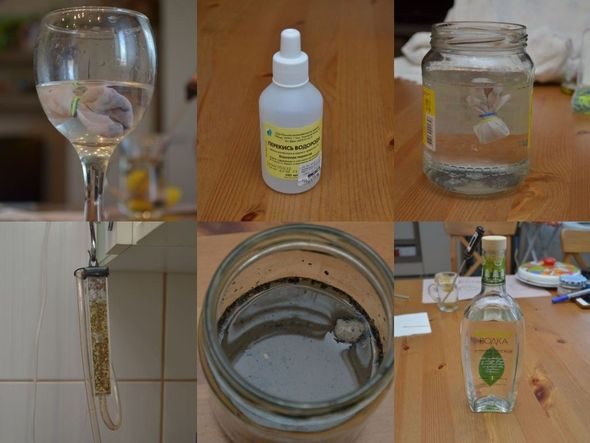

I already wrote how to plant carrots, and there I touched on the topic of accelerating seed germination, but it seems that not everything is so simple. In general, I present to your attention the results of the experiment.
If the seedlings did not appear
In cases where the sprouts still did not appear, it is recommended to dig up the beds, plant the carrots again. But it is necessary to be guided by the timing, since re-sowing will be effective only until mid-June. At the same time, one should not forget about choosing a variety suitable for this period, so that the vegetables have time to ripen before the cold weather.
Obtaining high-quality seedlings is considered not difficult, but time-consuming process. It is important not only to find a good site for planting, but also to properly process the seeds, dig up ridges, and provide post-sowing care. In this case, the carrots will germinate perfectly, it will be possible to harvest a large harvest.
How to properly prepare carrot seeds for planting in spring
Why does the question of preparing seeds before planting arise at all? The reason lies in their biological characteristics - essential oils are present in the seed shells that prevent moisture from penetrating inside. It is because of this feature that carrot seeds are classified as tightly similar.
If you are planting in early spring, immediately after the snow melts, there is a lot of moisture in the soil and you do not have to worry about frequent watering, practically planted and forgotten until the very emergence. Another thing is if you plant later and in dry land, here without frequent watering the seeds simply will not sprout.And if you do not have the opportunity to often visit the garden, you have to go to various tricks - either close the bed with carrots with a film or covering material.
Weather
Since carrots love light, it is not recommended to plant them even in minimally darkened areas. This is necessary so that later you do not ask questions about why your carrots did not sprout. Carrots grow well without frequent watering, which is very convenient for many summer residents who cannot pay attention to the vegetable every day. As for the frost, you shouldn't worry about that either. Carrots behave very well even with prolonged frosts and will not die during a cold snap. But this does not mean that carrots do not need to be looked after. The best harvest will be when it is warm, sunny and there is timely optimal watering.
How to speed up the germination of carrot seeds
There are a great many ways to accelerate germination on the Internet, I have no opportunity to check all of them. For example: put the seeds in a bag and dig in the ground before winter. Naturally, now it's May, and I can't repeat this. Therefore, I tried to collect the most frequently mentioned and reproduced them.
Someone might want to know how seeds germinate in some other way. Friends, write in the comments, because I have a desire to repeat the experiment next year, and significantly expand the number of methods under consideration. In the meantime, let's move on to what we have. Below I have written briefly about each method and what was done with it.
To carry out the experiment, I found a bag with carrot seeds of the Moscow winter A515 variety lying around in the house.
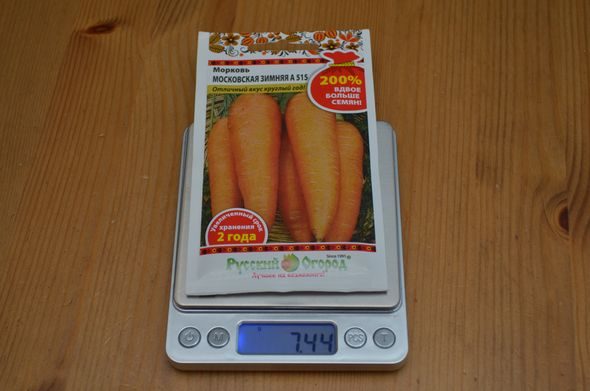

On the bag, a weight of 4g was declared. The expiration date was overdue, probably for this reason we did not use it. The experiment started on May 18, 2019.


In all fairness, the weight was even slightly higher.
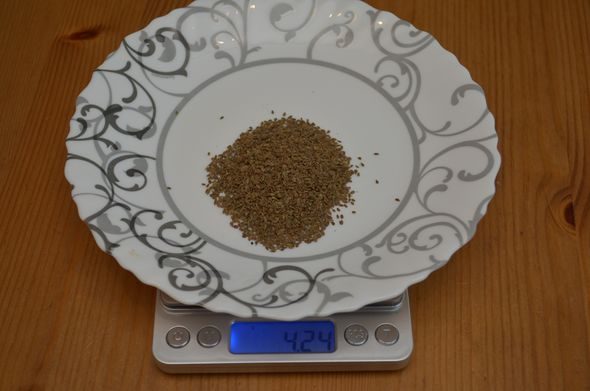

All the seeds were divided equally into 7 sachets, which were then used for different methods of germination.
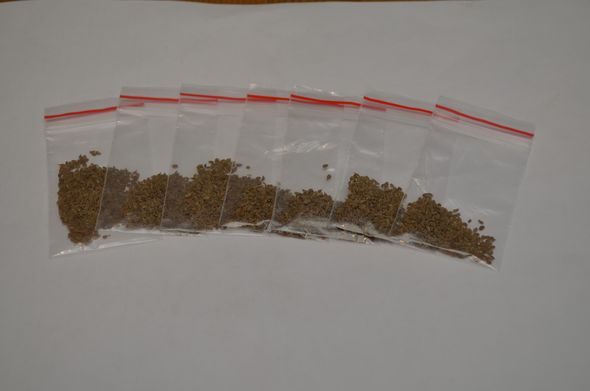

Well, now let's move on directly to the methods of germination themselves.
Accelerate the germination of carrot seeds with vodka
One way to speed up the germination of carrot seeds is to put them in a cloth bag and then put them in vodka for 10 minutes. You do not need to keep it longer, otherwise the seeds can be burned. After the vodka, the seed bag is washed in water and planted. Of the advantages of this method, a significant acceleration of germination is indicated, the prevention of various diseases by disinfecting seeds.
Well, I took vodka, I didn't really choose what was in the closet.
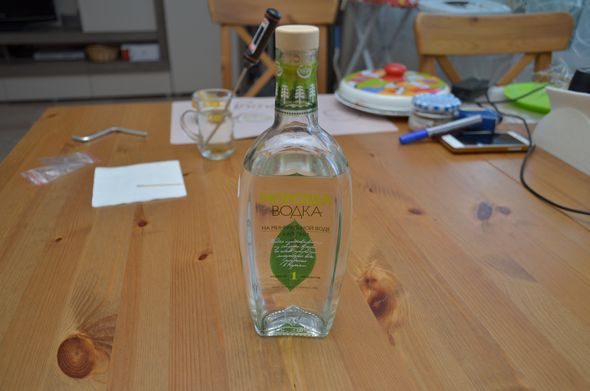

I poured it into a glass, poured the seeds into a tissue bag and dipped it into the sacred liquid for 10 minutes.


Then the bag was washed in cold water and dropped out without drying. Where I planted it and how, see the end of the article.
How to accelerate seed germination with hydrogen peroxide
The next way to accelerate germination is to soak the seeds in a solution of hydrogen peroxide. There are two options for this method:
- soaking in 3% peroxide, i.e. undiluted, for 15-20 minutes, then rinsing in water and planting
- a solution is made from peroxide: 1 tbsp. a spoonful of peroxide for 0.5 liters of water, the seeds are kept for a day, then they are planted without washing in water
The advantages of this method are fast and friendly germination. It is argued that peroxide acts as a growth stimulant, that even hard-growing and expired seeds germinate very well and amicably.
I decided to do it according to the second option, for this I took peroxide,
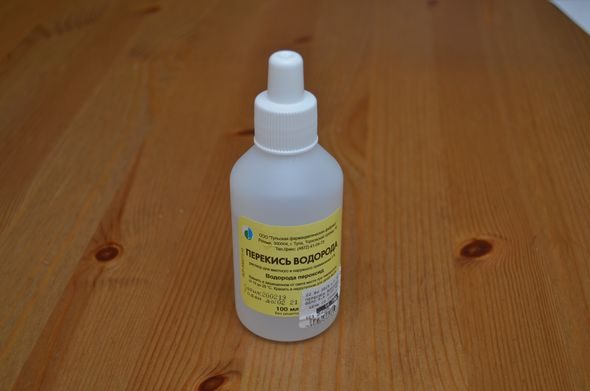

one tablespoon of which he dissolved in 0.5 liters of water and dipped a bag of seeds into the resulting solution.
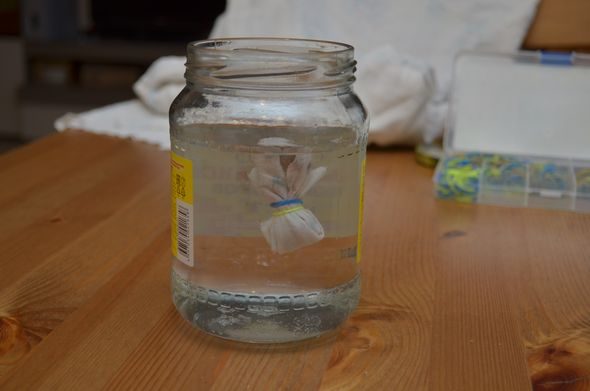

A day later, he landed without washing.
How to speed up germination of carrot seeds in hot water
The next method is to soak in hot water. Its essence is as follows: carrot seeds are placed in a cloth bag, and it is filled with hot water at a temperature of 50-55 degrees.After the water has cooled down, rinse the bag in cold water and fill it with water at a temperature of 40 degrees, allow it to cool, then rinse it again in cold water and fill it with 40-degree water again. This is repeated 3-4 times, then the seeds are planted.
Hot water is said to wash away essential oils very well, accelerating germination. I didn't put the seeds in the bag, I just filled it with hot water first.
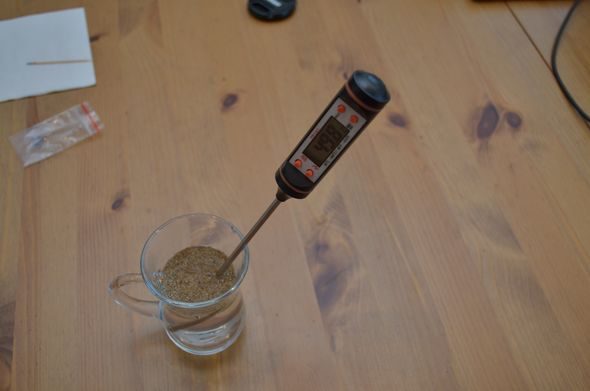

After a while, the seeds sank to the bottom, which greatly facilitated the draining of the water. Then he washed it with cold water, drained it and filled it with water with a temperature of 40 degrees. The rest was done as per the instructions.
Seed bubbling
I had to tinker with this method. I have already written about my skepticism about the variants of the execution of this method about which they write on the Internet. And it is usually recommended to pour water into a 3 liter jar, add seeds, turn on the aquarium compressor and lower the hose into the jar.
At the same time, it is stated that the seeds are saturated ... for some reason with air, but at the same time the oil film is washed off. Germination acceleration occurs for a whole week!
Everything would be fine, but the course of aerohydrodynamics passed at the institute did not allow believing in this. In order for the whole method to somehow work, the velocity of air outflow in the liquid must be high enough. Therefore, I had to look for something to make a device. To begin with, I just took a small funnel, inserted a hose from the compressor from below, poured water and turned it on.
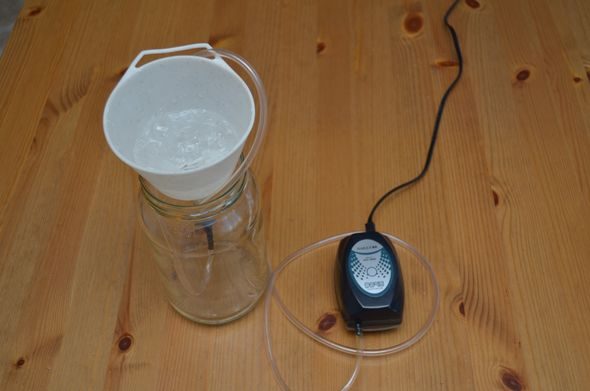

But very quickly he refused it. No, everything worked, but the bubbles came out and burst so loudly that it became clear, wherever we removed this funnel in our apartment, at night everything would be very well heard. And then the gaze fell on the building level lying in the far corner. It turned out to be the perfect adaptation for the experience.
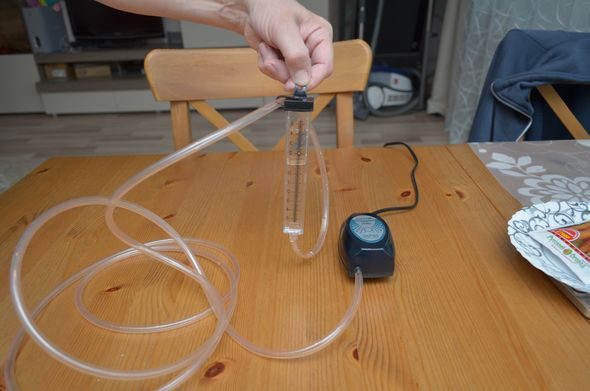

True, I had to reduce the capacity of the compressor, but it was not difficult to do this, I just bent the hose and that's it.
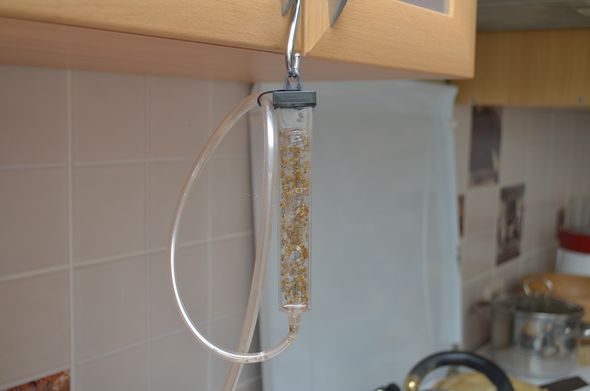

The video shows very clearly what is happening with the seeds. They were not only in a good air flow, but also constantly knocked against each other, mechanically abrading the hard shell against each other.
After a few hours the water turned yellow and I changed it. No more water changes were required.
Soaking seeds before planting in a solution with ash
Another common method is soaking in water with added ash. To do this, add 1 tablespoon of ash to 1 liter of water, and mix everything. Seeds in a tissue bag are immersed in the resulting solution for 1 day. Although there are options, for example, soaking not for a day, but for only 3 hours, but I did it for a day.


dissolved in water and dropped the bag of seeds.
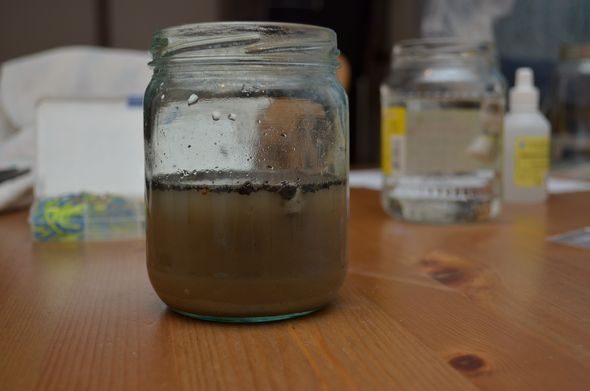

I put the containers with peroxide and ash in the warmest place, on the kitchen set.
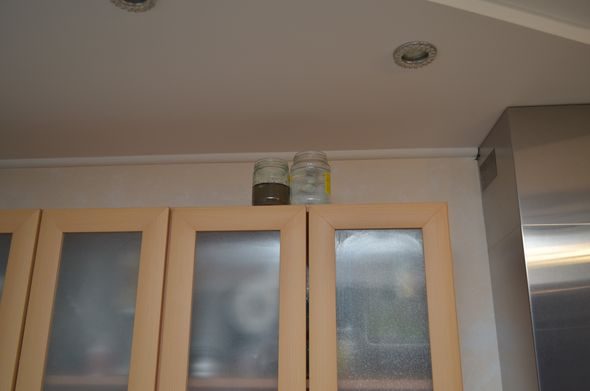

Grinding seeds with sand
And he found another method that seemed to me to have the right to life - grinding seeds with dry sand. At the same time, the sand abrades the shell of the seeds, thereby accelerating their germination. I tried to do it, I will say that the feeling is ambiguous. The sand was gray, and when I poured the seeds into it, they were lost against the general background. When rubbing, it is not clear whether there are seeds between the fingers or not, or only one sand. Therefore, the whole process took place by touch.
Another time, if you take sand, then light. I did not photograph the process, because the seeds are not visible against the background of the sand, and it is completely unclear what you are doing there. Subsequently, the seeds were planted with sand.
For planting, he took a container of a suitable size, filled it with earth from the garden, leveled it and shed it well with water a day before planting. On the day of planting, I made small grooves of equal depth at an equal distance from each other.
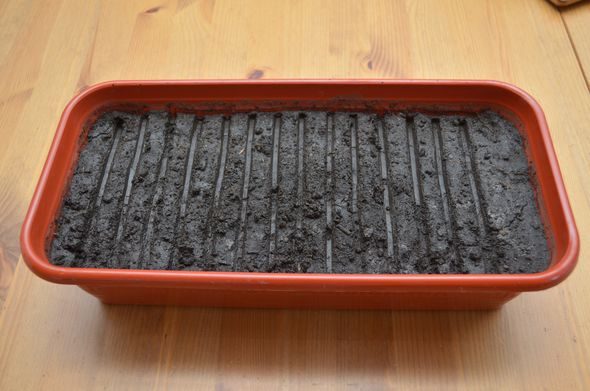

The seeds were introduced into the grooves. Let me tell you, the process of planting wet carrot seeds is still a process. They are small and constantly stick to everything. I coped with everything in 40 minutes.I sowed thickly, not because it was necessary, but simply there were a lot of seeds and did not plan to thin out at all. Here's what happened.
Gadgets
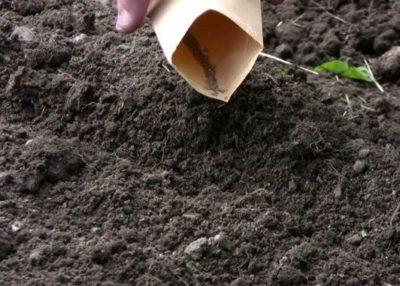

Manual seeder - a two-wheeled device with a container, at the bottom of which a hole is made for sowing. The front wheel has spikes, which allows you to make depressions, the rear wheel is smooth, it levels the furrow and slightly compresses the seeds. There are also wide models that allow you to sow multiple rows at once.- Cells... Use 2 mesh containers from 3 dozen eggs. Place one inside the other and press down to the ground. Pour the seeds into the resulting dimples. With this method, the optimum distance is maintained, and no thinning is required.
- Dispenser container (salt shaker, medicine or sweetener packaging). Mix seeds with sand and pour into a jar. After pressing the button, the seeds will spill out in a certain amount.
- Syringe planter... Ready-made device for planting small seeds. The planting material is poured into the flask, after pressing the piston, the seeds are poured out.
- Wooden rake with trapezoidal teeth... The principle of operation is the same as for cells, the rake leaves indentations in the ground, into which the seeds are then laid.
Choose a fixture depending on the area you are planting and availability.
About devices for sowing carrots is written in a separate article.
Zoning
Soil and climatic conditions greatly affect agriculture in each region. Based on these conditions, breeders conduct trials and find out which carrot varieties are most suitable for each region.
The climate of the Moscow region is characterized by mild snowy winters and not too hot summers with moderate rainfall. Both early and late varieties of carrots will grow well here.
The following varieties are suitable for cultivation in this region:
- their early species: Incomparable, Callisto F1, Nantes 4;
- from medium types: Vitaminnaya 6, Losinoostrovskya13, Moscow special, Shantane 2461;
- late species: Queen of Autumn;
- for late autumn sowing: Russian giant, Samson, Olympian hybrid.
For the harsh conditions of Siberia and the Urals, mid-season carrot varieties are best suited. It is better not to grow early and late varieties. The early ones will give a small harvest, and the later ones will not have time to gain sugar content and ripen.
The best varieties for this region are Altai shortened, Moscow winter, Shantane 2461, Vitaminnaya 6, Losinoostrovskaya13, Laguna, Bangor, Canada, Zabava, Viking, Darina.
The middle zone of Russia is the best natural complex, with loose fertile soil and mild humid climate for growing this vegetable. The early varieties are very popular - Tushon, Nandrin F1, mid-ripening - Moscow winter, Nespravnaya, Samson, late-ripening - Canada F1, Flakkoro.
Important! To get a good harvest of sweet carrots, you need to buy zoned varieties of this vegetable.
How to choose a variety?
Carrot varieties are subdivided into seeds of domestic and foreign selection.:
- Russian: higher quantitative indicators of carotenoids, vitamins and minerals; more adapted to our climate and stored longer.
- Foreign: give a more even crop; have smooth and even roots.
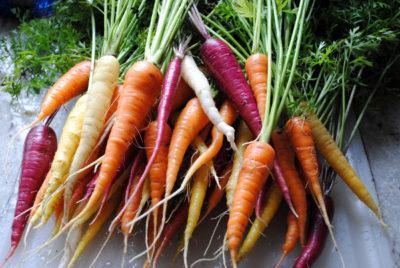

When making a decision, consider the purpose of vegetables:
- For fresh consumption, hot dishes or preservation, early ripening varieties are suitable: Dordogne F1, Amsterdam, Lyubimaya.
- Mid-season is better for storage: Queen of Autumn, Emperor, Anastasia, as well as late ripening: Samson, Shantane, Golden Autumn.
- To be included in the children's diet consider varieties high in sugar and carotene: Children's joy, Orange friend, Dobrynya.
- For winter sowing stop the choice on the Moscow winter, Artek or Zabava.
We offer you to watch a video about the nuances of choosing a variety of carrots for planting:
Agrotechnics
Sowing place
Open, sunny.It is good if cucumbers, tomatoes, beans or peas were grown on the selected site before the carrots.
The soil
Medium loamy or sandy loam with a neutral reaction (pH - 6-7). The soil for the carrot bed is prepared in the fall. It is dug up, weed roots are removed and fertilizers are applied (compost, humus, ash). If the soil has an acidic composition, then lime or chalk is added during autumn preparation. By spring, they will evenly saturate the soil layer. If the soil is clayey, then a mixture of sand and peat in equal parts is introduced into it.
Seed selection
Many varieties of carrots differ in the shape and color of the fruit, the period of growth and ripening, sugar content, and the duration of storage. How to sow carrots to sprout quickly?
According to the ripening period, carrots are classified:
- Early maturing varieties - up to 90 days from the date of sowing. They are grown in order to get the first vitamins at the end of June, but they are not suitable for canning and winter maturation;
- Mid-season varieties - ripen for more than a hundred days. Suitable for regions with a short period of active plant growth;
- Late varieties are grown in regions with a favorable climate. Ripening period - up to 4-5 months. They are leaders in sugar content, density and shelf life.
Additional Information. Only mid-season carrots can be grown as large as possible. The weight of one root crop can reach up to 200 grams.
Carrot seeds have a coarse, dense shell, so you can wait for seedlings up to 30 days. So that the seeds begin to sprout faster, experienced gardeners soak them before sowing:
- Hot shower for carrot seeds. Place the seeds in a piece of clean material, then fold and tie the material so that the seeds do not crumble during the procedure. Then keep the package under a hot shower of fifty degrees for no more than a minute. Do such procedures two days in a row, three times. After the hot procedure, the bag is left on a plate of water. A little water so that the seeds do not dry out. After the sixth procedure, the seeds swell. They must be removed from the bag and dried. They are ready to sow;
- "Carrots in a bag" is another popular way to quickly sprout tough carrot seeds. At the very beginning of spring, when the sun begins to bake, and the earth appeared from under the melted snowdrifts, it is necessary to place a bag of carrot seeds in an earthen hole. The depth of the pit is a shovel bayonet. Mark the place in order to get seeds that are already beginning to germinate in 1.5-2 weeks. They are mixed with dry clean sand to sow. Then the bed is harrowed and covered with foil. Carrot shoots will appear in a week. It is necessary to remove the film in time so that the tender sprouts do not stretch out;
- Soaking carrot seeds in vodka softens the rough shell and speeds up the emergence of sprouts. It is enough for stratification to soak a bag of seeds in an alcohol solution for half an hour so that they swell. Next, the planting material is washed with water at room temperature and sown;
- Soaking seeds in preparations to stimulate growth (Krezacin, Emistim, Epin, Agat 25k) significantly accelerates their germination and significantly reduces the interval from sowing to harvesting. Planting material should be soaked just before sowing, following the manufacturer's instructions. After the soaking procedure, the seeds must be dried. Wet seeds clump together and are inconvenient to sow evenly.
Sowing time is spring, summer, autumn.
On a note. Sowing in autumn provides earlier germination of carrot seeds. The crop ripens almost a month earlier than during spring sowing, but it cannot be left for winter storage.
Factors affecting seedlings
Slowing down
There are several reasons for stunting. These include:
- Incorrect storage of seed before sowing.
- Breakdown of beds on soils that are heavy in structure, too watery, fertilized with manure. Violation of the rules of crop rotation.
- Selection of low-quality seeds.
- Sowing depth too large or insufficient.
- Improper planting care, for example, insufficient watering.
- Poor processing of planting material.
- Low temperatures.
- The presence of carrot pests.
REFERENCE! At the very surface of the soil, you should not sow carrot seeds, they can freeze slightly, which negatively affects the speed of their germination. Planting in loose soil is considered optimal in spring to a depth of 2 cm, and in late autumn - up to 8 cm. In cold weather, it is recommended to cover the beds.
Accelerating
Among the factors that ensure the rapid germination of root crops, one can single out:
- Loose, with a light structure, sandy loam soils.
- Preliminary preparation of seeds from excess essential oils: soaking, bubbling, heat treatment.
- Covering plantings with woven fabric in cold weather conditions.
- Correct sowing dates.
- Good illumination of the site.
- Optimum seeding depth.
High-quality processing of the beds in the fall is considered an important reason for obtaining sprouted strong shoots.
Articles in the topic
We plant carrots to sprout quickly.
Herbicides to accelerate germination.
Leading to too dense seedlings
The reasons for dense germination include:
- Failure to comply with the optimal seed placement schemes during planting.
- Untimely thinning.
Planting seeds in the ground should be done at a distance of 1.5 to 2 cm.
If the first thinning is incorrect (at the stage of 2-3 leaves), leaving a distance of less than 2-2.5 cm between the crops, the plantings will thicken further in the future. The second time the procedure is repeated with the appearance of 5–6 leaves in the sprouts. In this case, at least 4–5 cm between shoots is allowed. The rest of the crops are recommended to be replanted.
Important!
Water the beds abundantly before thinning to reduce the risk of damage to the carrot roots.
There are planting methods without further thinning.
How carrots grow: timing
The seed germination rate depends on the amount of water and heat. Seeds germinate faster in moist soil. In dry, some of the seeds will not germinate. Shoots appear more amicably at "good" heat, when the temperature on the thermometer rises above + 15 °. Crops germinate worse and slower at + 10 °.
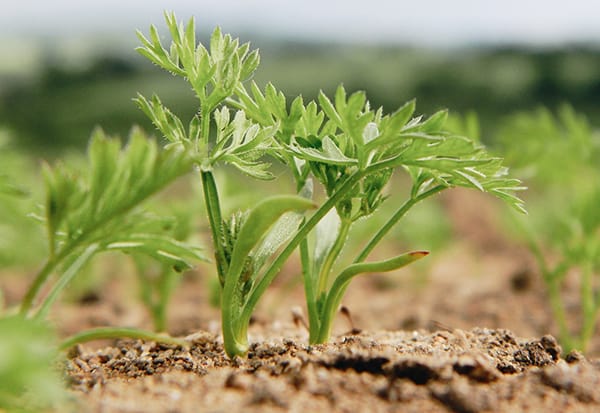

Reference books give the following data on the germination of carrot seeds:
- In early spring, at + 8 ... + 9 °, seedlings appear within 25-30 days. Already at + 5 °, germination processes begin in the seeds - the gluten swells, a sprout begins to form. However, at low temperatures, the growth processes are greatly slowed down.
- At + 12 ... + 15 ° С the germination time is 15-20 days.
- At + 18 ... + 20 ° C, carrots can germinate in 10 days. However, heat alone is not enough for rapid germination. Pre-sowing preparation is needed.
Note: The germination rate of carrot seeds is not 100%. Usually 60-80% emerges, depending on the variety and ripening conditions. You can separate the germinating material from the non-germinating one by soaking. Salt is diluted in a jar of water (2 tablespoons of salt for 0.5 liters of water) and the seed is poured into the water. Stir. Those seeds that have surfaced are thrown away. Those that have sunk are taken out, dried and used for planting.
What do seedlings look like in stages?
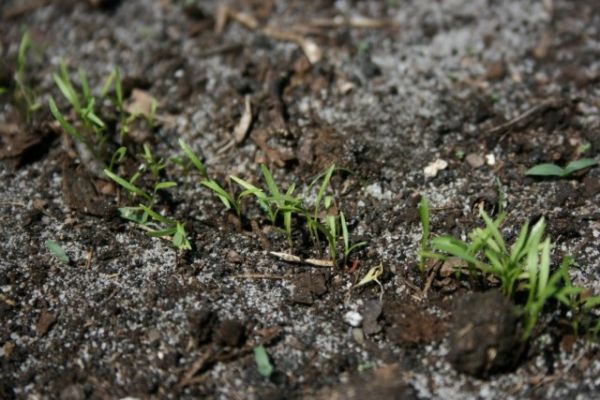

Photo: first shoots
The first carrot sprouts with two to three leaves appear in the spring, most often on days 14–25. If the seeds are pre-soaked before sowing, seedlings on loose soil may appear on the 7th day.
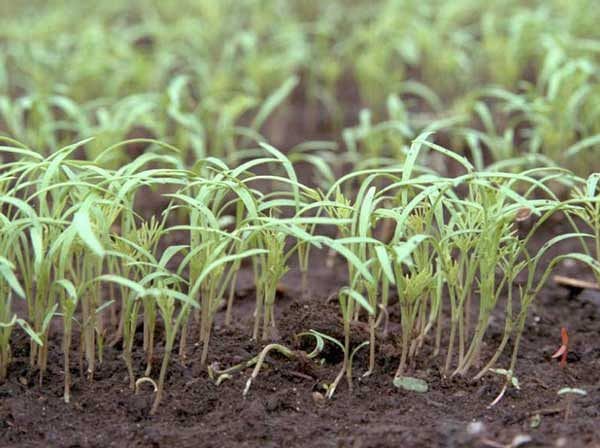

Photo: 2-3 leaves
After 16–20 days, the crops already have 5–6 leaves, the height of the carrots reaches 10 cm. At this stage, the vegetable can be harvested "on a bunch".
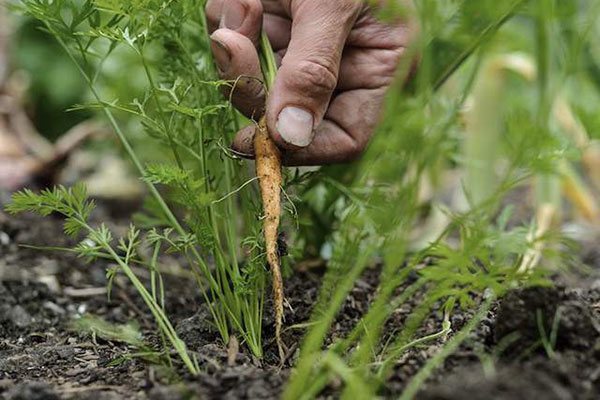

Photo: Seedlings have grown.
Difference from dill
Unlike dill, carrot tops are less fleshy and less juicy. This is noticeable from the first weeks after the seedlings hatch. Dill twigs are much juicier, more watery, more luxuriant. A significant difference is also observed in the color of the sprouts. They are much brighter in carrots. Dill seedlings are usually pale green.
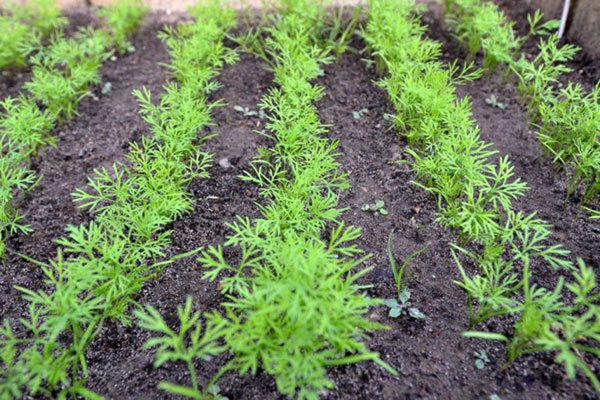

Photo: Dill seedlings for comparison.
At the base of the carrot, you can gently feel the powerful roots. Dill greens can also be distinguished by their specific aroma, which manifests itself even at the earliest stages of crop growth, as they mature, umbrella ovaries are visible on the stems.
The reason for the long germination is essential oils
Carrot seeds have a characteristic odor. Its source is the essential oils on the outer shell. The function of oils is not only to exude an odor. The oil shell makes it difficult for water to enter the sticky part of the seed. And this complicates its germination.
The presence of essential oils prevents fresh seeds from sprouting in the fall. Carrots form flower stalks in July (in the second year of cultivation), in August ripe seeds are poured onto the ground. Essential oils prevent them from germinating.
During the winter, the oily shell is washed away from the surface of the seed. By spring, the gluten swells and, with the onset of warmth, gives rise to friendly shoots. This happens during autumn sowing, when future plants overwinter in the ground.
Pre-winter fall planting is one of the easiest options to get early shoots. And how to accelerate the germination of carrots during spring planting? There are several ways to wash off essential oils.
Where and at what time of the year is it better to plant carrots
Before the start of the dacha season, work is usually carried out aimed at planning planting events. Decide what kind of harvest you expect. The scheme of planting carrots depends on this.
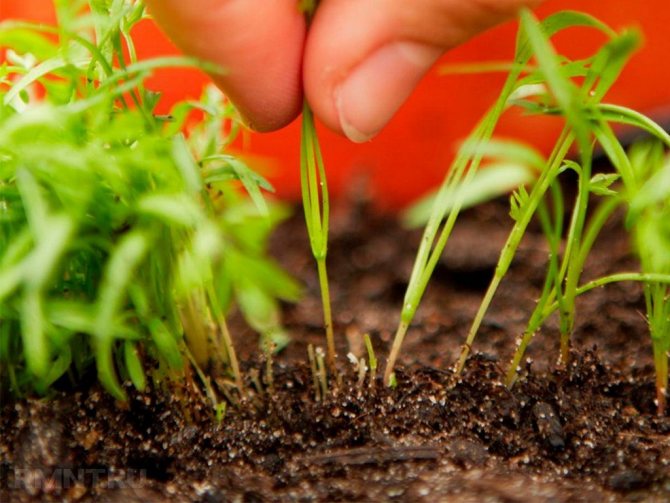

Growing carrots outdoors
In general, a vegetable can be sown three times:
- before frost;
- in early spring;
- At the beginning of June.
As soon as the unique smell of spring appears in the air, you immediately want light, fresh, healthy and tasty. You can get a harvest of early carrots by sowing it in open ground, cultivation does not require much effort, and you will be satisfied with the result.
Winter landing is carried out as soon as the air temperature does not steadily rise above five degrees Celsius. Seeds that have survived frosts are more hardy, do not deteriorate by various garden pests, and germinate well. The only drawback is that the roots are not designed for long storage. That is, only for consumption after collection.
Growing carrots sown in early spring in the open field is the most common method among summer residents.
For storing vegetables, the third option is chosen - planting in the summer. The crop can be harvested in the fall, it makes it possible to make supplies, the fruits do not deteriorate, retain their structure, do not wither and do not become soft. Thus, you will receive a vitamin reserve for the cold season.
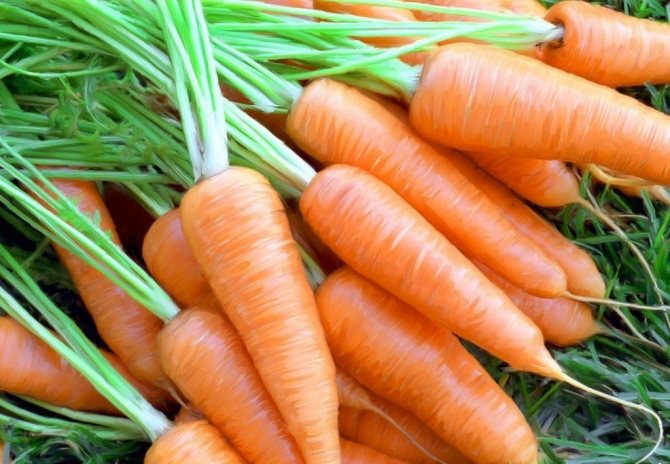

Growing carrots in early June
Fast emergence of carrots: dropping in the soil
The first way to significantly speed up the appearance of the first shoots is to dig the seeds into the soil for 7-10 days. Small seeds are put into a linen bag for dropping. The top of the bag is tied and lowered into a hole to a depth of about 10 cm. Sprinkle with earth and watered with water. Further - watered every other day, as the earth dries up.
In moist spring soil, carrot seeds undergo accelerated "stratification". Essential oils are washed off from their surface, gluten swells. Such seeds give amicable shoots within a week.
A pouch with swollen carrot seeds is dug out after 7-10 days. The contents are poured into a container, a little starch is added in order to remove excess liquid. And planted in prepared furrows.
Note: for better germination, the bottom of the furrow should be slightly "tamped". It is convenient to do this with a round stick or a shovel shaft. Put it on the garden bed and press down. You will get a ready "rammed" furrow for disembarkation.
Care when growing carrots
Large, even and beautiful root vegetables will grow in the garden when properly planted and cared for in the open field. The earth should be loose, this must be constantly monitored.If you skip this moment and allow soil compaction, your crop can turn out to be crooked, with forked roots.
Planting carrots without thinning is an unacceptable step. You need to start breaking through the seedlings literally after the first leaves appear.
Experienced gardeners recommend adding a few radish or salad seeds when sowing. They sprout a little earlier, so you will already have rows with carrots marked, and you will be able to carry out work literally from the first days.
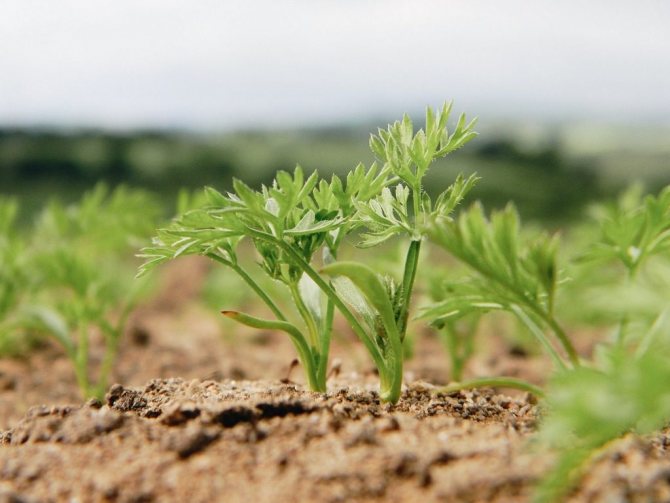

Planting carrots without thinning is an unacceptable step
You need to break through several times, do not be afraid to pull out the excess.
Weeds have a detrimental effect, they need to be constantly removed, but the neighborhood with onions will help to cope with pests that attack just the orange root crop.
Rapid germination of carrots: treatment with peroxide or vodka
The next way to stimulate carrot seeds is a short soak in hydrogen peroxide. The soaking time does not exceed 10 minutes. Peroxide dissolves the fatty coat of essential oils and facilitates water absorption and subsequent germination of seeds.
How to soak? Small seeds are placed in a cloth bag and dipped in a container with 3% peroxide or vodka. Keep in peroxide for no longer than 10 minutes. After - washed in running water, without removing from the bag. They are planted immediately after processing.
Note: similarly, you can soak carrot seeds in vodka. Here, the soaking time is no longer than 5 minutes. Prolonged soaking can burn the outer skin and reduce germination. Thorough washing of seeds in water is required.
After soaking in gluten, swelling processes begin. This seed needs watering.
Planting time: when is it better and at what temperature?
Plant the seeds when the temperature is at least 15 ° C during the day, and the soil warms up to 7-8 ° C.
| Varieties | Landing dates in central Russia | Vegetation period, days |
| Early ripe | April 20-30 | 85-100 |
| Mid-season | April 25-May 5 | 105-120 |
| Late ripening | June 10-15 | >125 |
Folk omens say that sowing can be started when aspens and violets have bloomed.

